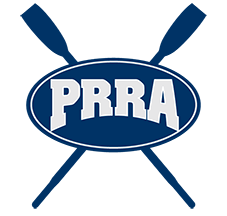The following rules were developed to promote safe rowing on the Passaic River, and may be modified and supplemented as needed. They are intended for all coaches and rowers, but are not meant to be a substitute for common sense; please use your judgment and always bear safety in mind. In the event of an accident, submit an online form and complete a paper accident report at the boathouse. If you observe damage to boats or equipment, please submit an Observed Damage Report.
General
- All members must abide by park rules and regulations. The park is closed from ½ hour after sunset to ½ hour before sunrise. When returning from regattas after sunset, we are permitted to enter the park to store boats and equipment.
- Coaches are required to comply with all US Rowing, US Coast Guard and New Jersey boating safety rules and regulations. New Jersey law now requires all power boat operators to be certified via completion of a standardized boating safety course.
- Rowers and coaches are responsible for the observance and enforcement of the rules, and it is their individual duty to inform any coach or crew who is violating the rules.
- All rowers must know how to swim and every organization must have a signed consent form from all rowing members. It is every rowing organization’s responsibility to ensure compliance.
- In case of swamping or flipping, rowers shall remain with the boat, which is used as a flotation device. Coaches shall carry the appropriate safety equipment in launches at all times—PFDs, line, whistle, cell phone, paddle.
- Junior rowers shall not row unescorted. The team’s coaching launch must be on the water and maintain line of sight with all crews.
Equipment
- All boats must be equipped with a bow ball, and heel ties must be secured so as to allow a maximum of 3 inches of lift from the heel plate.
- Bow and stern lights are required when visibility is low, before sunrise and after sunset. The appropriate lighting is a flashing light on the bow and a white light on the stern. Both bow and stern lights should be visible from a safe distance.
- Only row equipment appropriate for your size and skill level. A list of the club’s boats is available in the boathouse. It details who may use what equipment. Under no circumstances may you use private equipment without explicit permission of the owner.
- If you notice damage, please note it in the log book. If you have any problems with club equipment while on the water, report it immediately when you return.
- All those who want to row PRRA singles must be certified by the club before they will be permitted to scull. New scullers must demonstrate that they can safely handle a boat without risk to themselves or others or to equipment.
- Always try to row with another person. If you are going out alone, make sure someone knows you are at the boathouse and planning to row.
- Club boats are not permitted south of the high-school boathouse in Kearny
Weather Conditions
- Do not row in dangerous conditions.
- Rowing is not permitted in very cold weather. No one shall row a single or double when the combined temperature of the air and the water is less than 90 degrees unless a coaching launch is in close proximity.
- Rowing is not permitted during low visibility conditions (fog), thunderstorms, or when lightning is visible or if thunder can be heard. Rowing may not restart until the fog has lifted or 30 minutes have passed from the last clap of thunder or flash of lightning.
- Other situations that constitute unsafe rowing conditions on the Passaic are extremely fast tidal flow, high winds, white caps, high or low temperatures (air and water), and large amounts of debris.
Launching
- At low tide, make certain there is enough water to launch or dock without damaging equipment.
- Launch to the north (upstream). Row well beyond the dock before turning to head south, especially when the current is flowing south.
- Always approach the dock from the south. Turn around far enough downstream to avoid having the current carry you into the bridge or interfere with others docking. Do not cut in front of others unless you have been given permission to do so.
River Traffic Patterns
- A starboard or right-hand rule is in effect on the river. Rowers heading north or south shall always keep the shore nearest the starboard side.
- Pass other boats on the left or port side only. Slower boats must yield to overtaking boats.
- Sculling boats shall have the right of way over coxed boats.
- Rowing through the first opening of a two-or-more opening bridge (the opening closest to the shore) is prohibited.
- There are several bridges with a single arch that is used for two-way traffic. Care should be used when approaching these bridges, especially if other boats are also approaching. While under any bridge, avoid passing other boats as far as possible.
- Boats rowing with the tidal flow cannot stop and have the right of way. Boats rowing against the tidal flow must yield.
- Exercise caution when approaching docks with launching crews. Most docks launch and dock to the north. At the high-school boathouse in Kearny, crews launch to the south and are directed to cross to the west side of the river soon after launching. Crews are prohibited from racing through the Belleville-Kearny bridge during high-school rowing sessions.
- Rowers are encouraged to row well beyond docks and not to “spin” in front of docks with launching or recovery activities.
Other Policies
Other rules and policies governing the for example the use of PRRA equipment are listed here.

